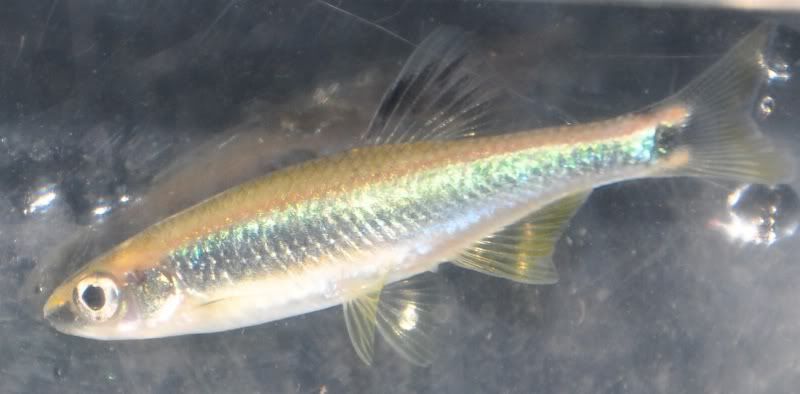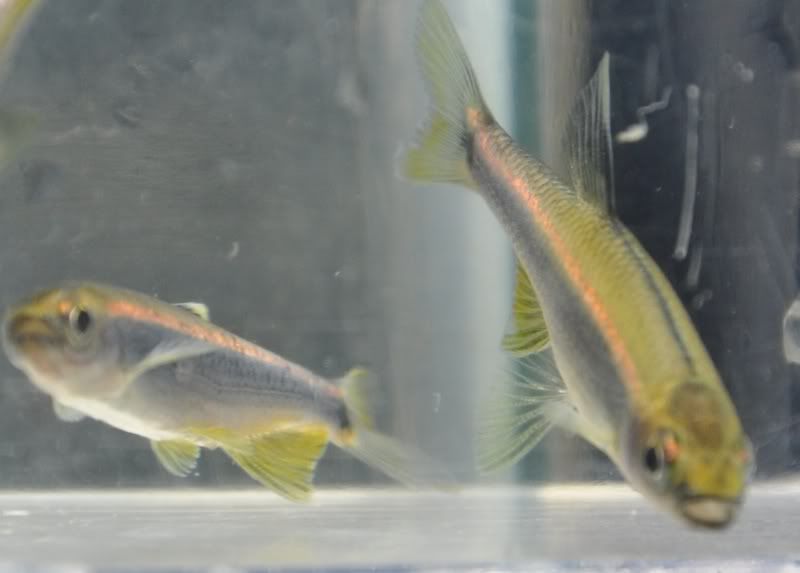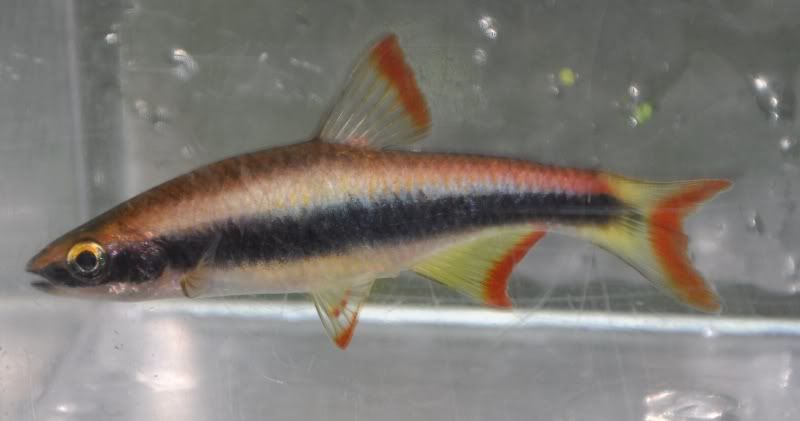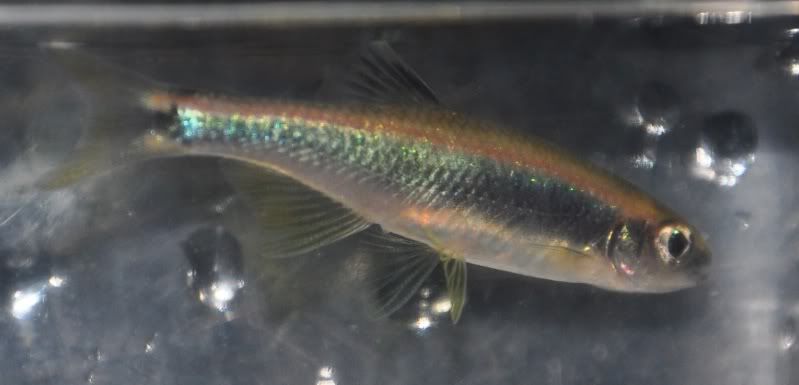
and the pt hypselopterus from one of the blackwater river feeder creeks


Posted 15 April 2012 - 01:36 PM



Posted 15 April 2012 - 05:01 PM
Posted 15 April 2012 - 07:03 PM

Posted 16 April 2012 - 02:05 AM
Edited by jetajockey, 16 April 2012 - 02:05 AM.
Posted 16 April 2012 - 06:12 AM
Posted 16 April 2012 - 08:45 PM
I think a Pteronotropis from the Choctawhatchee is going to still be a hypselopterus, per my reading of Dr. Brady Porter's presentation from NANFA-2009 in Tampa. Next over would be grandipinnis, in the Apalachicola drainage but not on the coast. Grandipinnis has somewhat larger dorsal and anal fins, the caudal spot is more of an oval and conspicuous, the anal fin's trailing edge is almost straight, and the fins have a bit of an orange tint. Whereas hypselopterus has an anal fin with a bit of a hook to it, a less distinct caudal spot (because the lateral band continues strong to the tail), the dorsal fin has black pigments all the way out to the edge, and the fins are clear near the body but yellow/amber further out. Brady doesn't mention it, but his px also show an upper black lip on the hypselopterus and a not-black lip on grandipinnis.right, metallicus, stonei, hypselopteris, grandipinnis, eurozonus (?) and maybe a couple other new ones are all pretty similar looking and were split out as separate species based on subtle (to my untrained eye anyway) differences and on drainage. This has been discussed in a couple of papers and in some threads here that you might be able to find by searching pteronotropis here on the forum.
Posted 17 April 2012 - 04:42 AM

0 members, 2 guests, 0 anonymous users